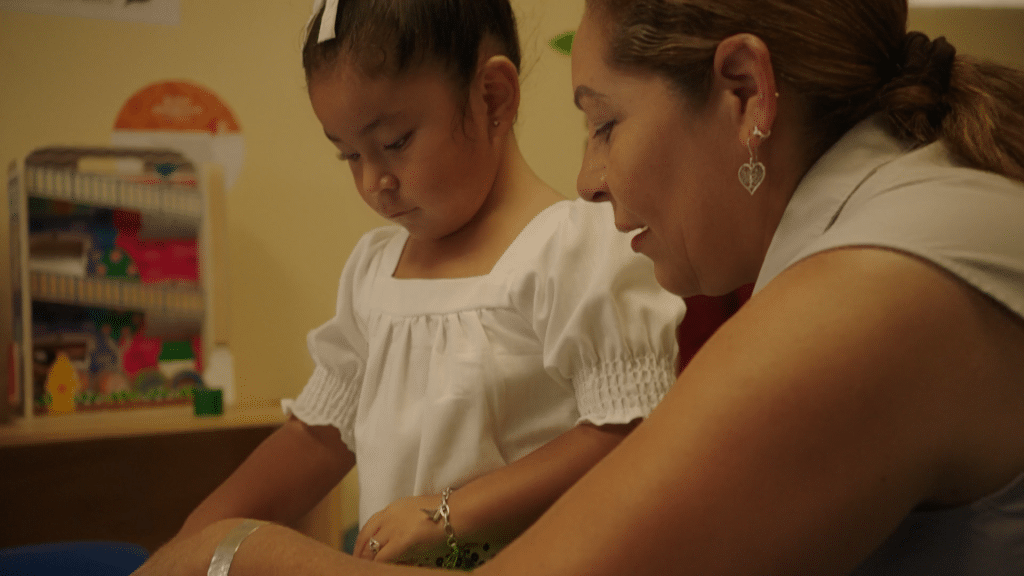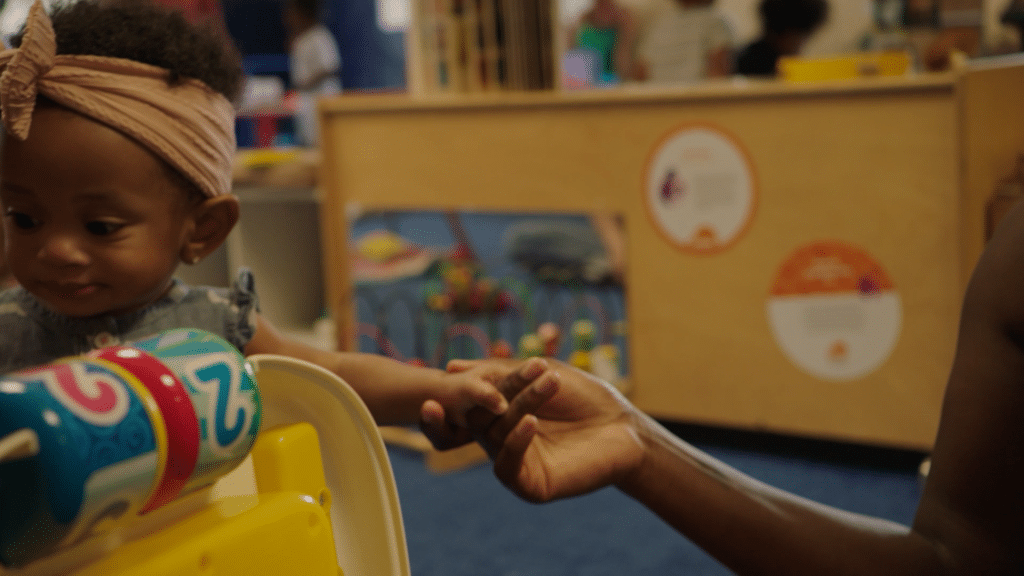Anyone who has wandered by the glowing exhibits of mesmerizing jellyfish or seen children press their noses to the glass of the iconic Kelp Forest exhibit can understand why the Monterey Bay Aquarium is beloved by children and adults alike worldwide.
Beyond offering extraordinary experiences that inspire awe and wonder, the Aquarium is also a renowned leader in science education and a global voice for marine science and public policy.
Everything they do works in concert to protect the future of our ocean.
The Aquarium is dedicated to turning the tide on the growing threats facing the ocean. As a champion of science-based solutions, they work tirelessly to protect marine life and habitats, connecting people from across the globe in a shared mission to safeguard the ocean’s future. They envision a world where the ocean thrives, and people are united in protecting the integrity of Earth’s life-sustaining natural systems. Through immersive exhibits, educational programs, scientific research, and advocacy, the Aquarium inspires action among the public and policymakers alike, extending its influence far beyond the walls of its iconic facility on the shores of California’s Monterey Bay.
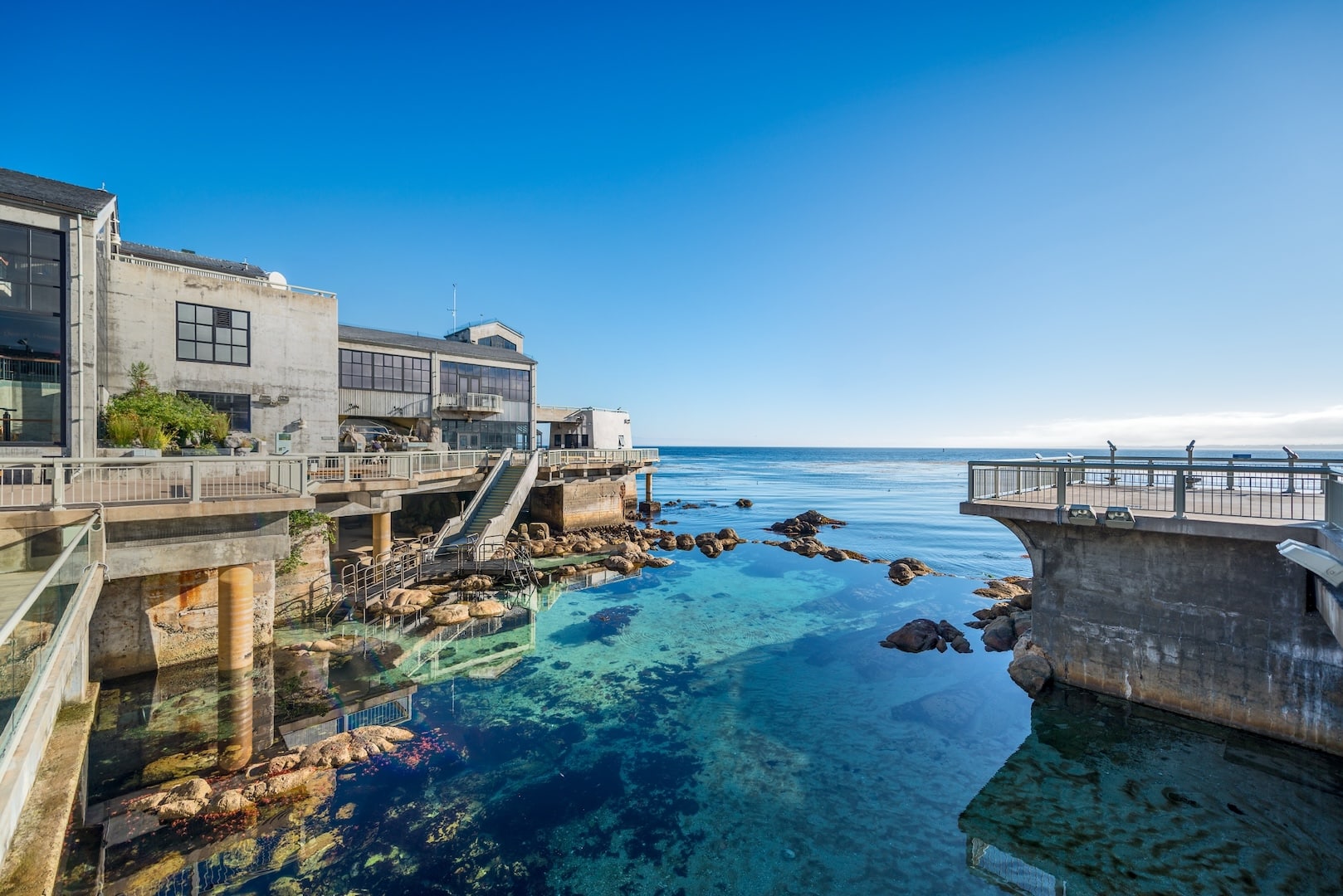
Designing the Ultimate Aquarium
Nancy Burnett, David Packard’s daughter, along with a group of four visionaries was the first to propose the idea of building an Aquarium after discussing the project with several Monterey Bay-area scientists. Nancy and her sister, Julie Packard, both studied marine biology in graduate school and believed strongly in the importance of broadening public awareness of Monterey Bay and the global ocean.
After six years of planning and a $57 million gift from David and Lucile Packard, their vision became reality on October 20, 1984. Julie Packard still serves as the executive director of the Aquarium, a position she has held since its opening.
“I grew up exploring California’s amazing natural places, and I’m just one of many who have drawn inspiration from this very special piece of ocean,” said Julie Packard. “It’s my privilege and great fun to lead our team here at the Aquarium, where in the past 38 years we’ve introduced more than 70 million people to the incredible ocean life just off our coast and in the vast ocean beyond. “
The Aquarium opened its doors in a state-of-the-art building on the ocean’s edge, on Monterey’s historic Cannery Row. The building itself was constructed on the site of a former sardine and squid cannery, the largest on Cannery Row and, in 1973, the last to close following years of decline of the local industry.
Monterey Bay itself is one of the most biologically diverse and ecologically important marine environments in the world, with a unique underwater canyon and a rich variety of marine life. Its location on the bay afforded the perfect opportunity to create an aquarium focused on marine conservation and education, allowing visitors to connect with the extraordinary ecosystem right at its doorstep.
This was the first major public aquarium in the world with permanent exhibits devoted to the marine life of its local waters: Monterey Bay and California’s Central Coast. Exhibits that were designed to expand public interest ultimately led to designation of the Monterey Bay National Marine Sanctuary in 1992— the largest in the continental United States.
It was also the first aquarium with a living kelp forest; the first to create large-scale jellyfish exhibits; the first to successfully exhibit young great white sharks and return them successfully to the wild; the only aquarium outside Japan to exhibit ocean sunfish, and yellowfin and bluefin tuna; and a pioneer in the creation of changing exhibitions that are now common in the aquarium world.
Soon after the aquarium opened, David Packard established the Monterey Bay Aquarium Research Institute (MBARI) as a center for research in ocean science. Institute scientists team up with engineers and a marine operations team, developing and deploying underwater robots that travel to remote, hard to access areas, resulting in a dramatic increase in seafloor maps and the discovery of hundreds of new species. MBARI is the Aquarium’s research and technology partner, and the Aquarium is MBARI’s education and conservation partner. Together, they work to educate the public about the ocean and share the knowledge and technology innovations gained from MBARI’s work with the global science and conservation community. Recently, MBARI and the Aquarium worked closely together on Into the Deep: Exploring Our Undiscovered Ocean—an exhibition featuring deep-sea animals from Monterey Bay and beyond.
Memorable Experiences and Inspiration
Celebrating 40 years of excellence, the Monterey Bay Aquarium remains a stunning showcase for the habitats and sea life of one of the world’s richest marine regions and is one of the best studied marine areas in the world.
Annually, the Aquarium hosts tens of thousands of students from across California for free school field trips. In 2019, the Aquarium expanded its educational offerings with the opening of the Bechtel Family Center for Ocean Education and Leadership. Located a few blocks from the Aquarium on Cannery Row, the center offers staff-led programming like observations of intertidal marine life, digital learning experiences, teen leadership development programs, and hands-on activities.
Each year, more than 1,500 teachers develop their skills in ecosystem-based approaches to science education as they engage in the Aquarium’s professional development programs.
Teens have their own programs to engage with the Aquarium and gain the tools needed to become science-literate and confident advocates for the ocean. Each year, around 300 teens enhance their knowledge and leadership skills through programs like Ocean Learning Adventures (OLAs), which offers hands-on learning experiences about the ocean and its interconnected ecosystems.
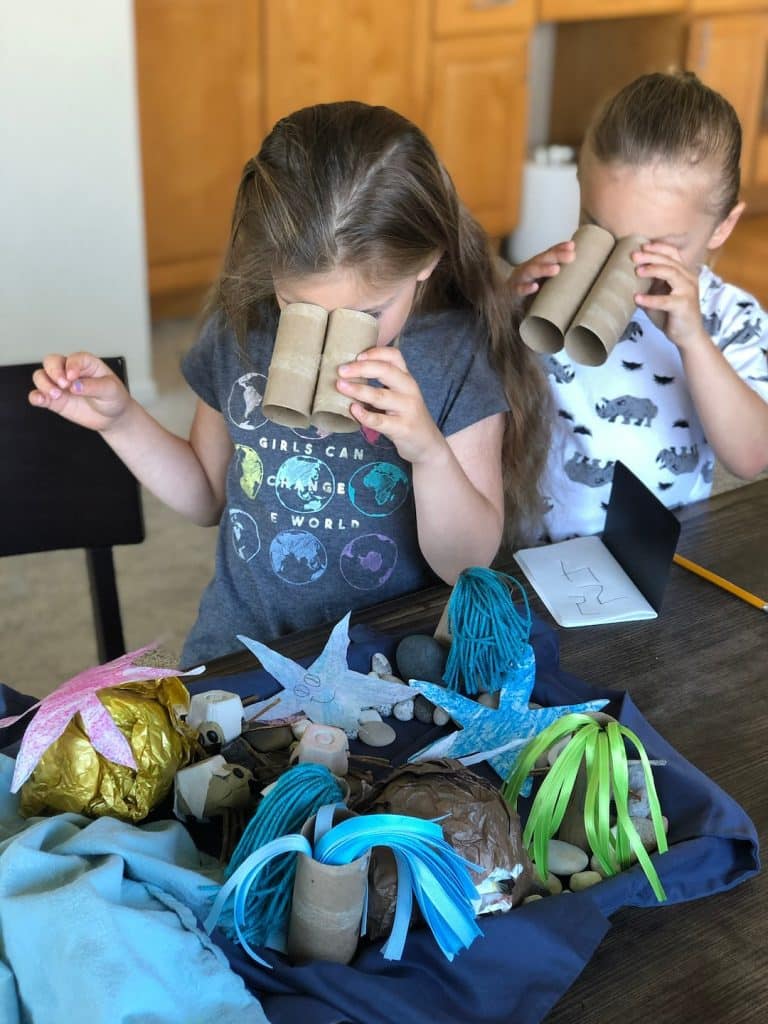
Acting for the Ocean
In addition to its stunning and educational exhibits, the Aquarium is dedicated to tackling critical ocean conservation issues, focusing its efforts on coastal California wildlife and ecosystems, global fisheries, plastic pollution, and climate change. Through coordinated science, policy, and public outreach, the Aquarium works to protect marine life and ecosystems, both locally and globally.
The Aquarium’s research programs focus on vulnerable species like southern sea otters, sharks, and Pacific bluefin tuna. Its Sea Otter Program, active for more than 30 years, contributes to coastal resilience by studying threats and reintroducing stranded pups. The Aquarium is also a global leader in Pacific bluefin tuna recovery efforts and shark conservation, using research and advocacy to promote sustainable practices and protect these species from overfishing and habitat destruction.
In addition to wildlife conservation, the Aquarium addresses global challenges like sustainable seafood, plastic pollution, and climate change. Through its Seafood Watch program, it promotes sustainable fishing and aquaculture practices around the world. To combat plastic pollution, the Aquarium raises awareness, supports policy action, and advocates for eco-friendly alternatives. On climate change, the Aquarium highlights the ocean’s vital role at the heart of the Earth’s climate system, advocating for policies that reduce carbon emissions and promote clean energy solutions.
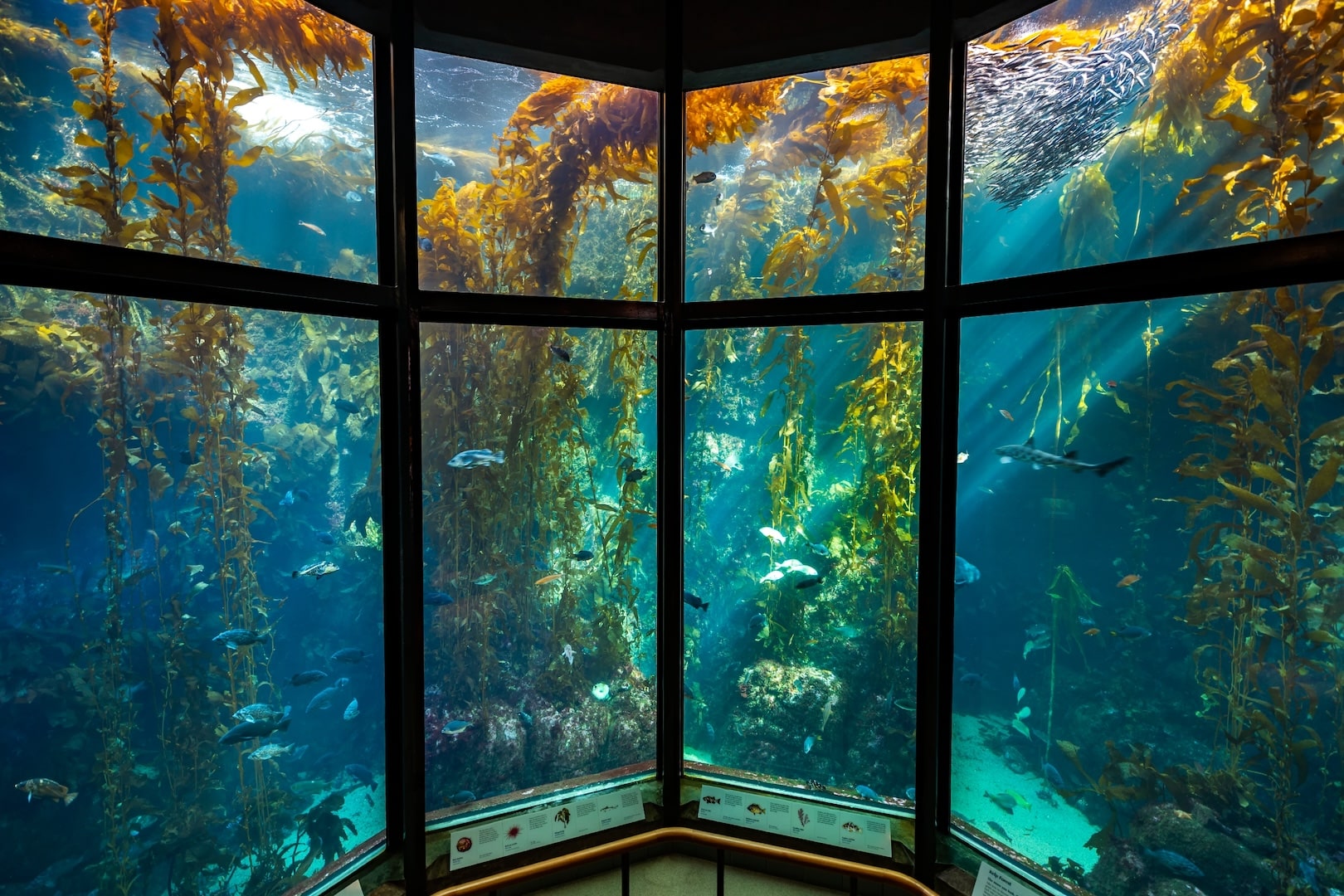
A Ripple Effect
Whether its staff are caring for the extraordinary elephant fish, opening a brand-new deep-sea exhibit, or advocating for a strong Global Plastic Treaty, there is always a lot going on at the Monterey Bay Aquarium.
Their ocean work is deeply aligned with the Packard Foundation in its pursuit of a just and equitable world where both people and nature flourish. When it comes to the ocean, the Packard Foundation and its grantee partners are working to develop and implement solutions that protect and restore ocean habitats and communities, achieve equitable and sustainable fisheries, end illegal fishing and human and worker rights abuses in seafood supply chains, and harness ocean-based climate solutions.
True to its founding 40 years ago, thanks to the passion and commitment of the Packard family, the Monterey Bay Aquarium’s leadership in ocean conservation and education is more than a testament to its remarkable past; it is a call to action for a sustainable future. As it continues to innovate and inspire through groundbreaking exhibits, educational programs, sound science, and effective advocacy, the Aquarium is uniting people worldwide in the critical mission to safeguard our living ocean. Through its ongoing efforts, it not only celebrates the splendor of jellyfish, otters, sardines, and sharks, it drives essential change for a thriving ocean and a resilient planet.




